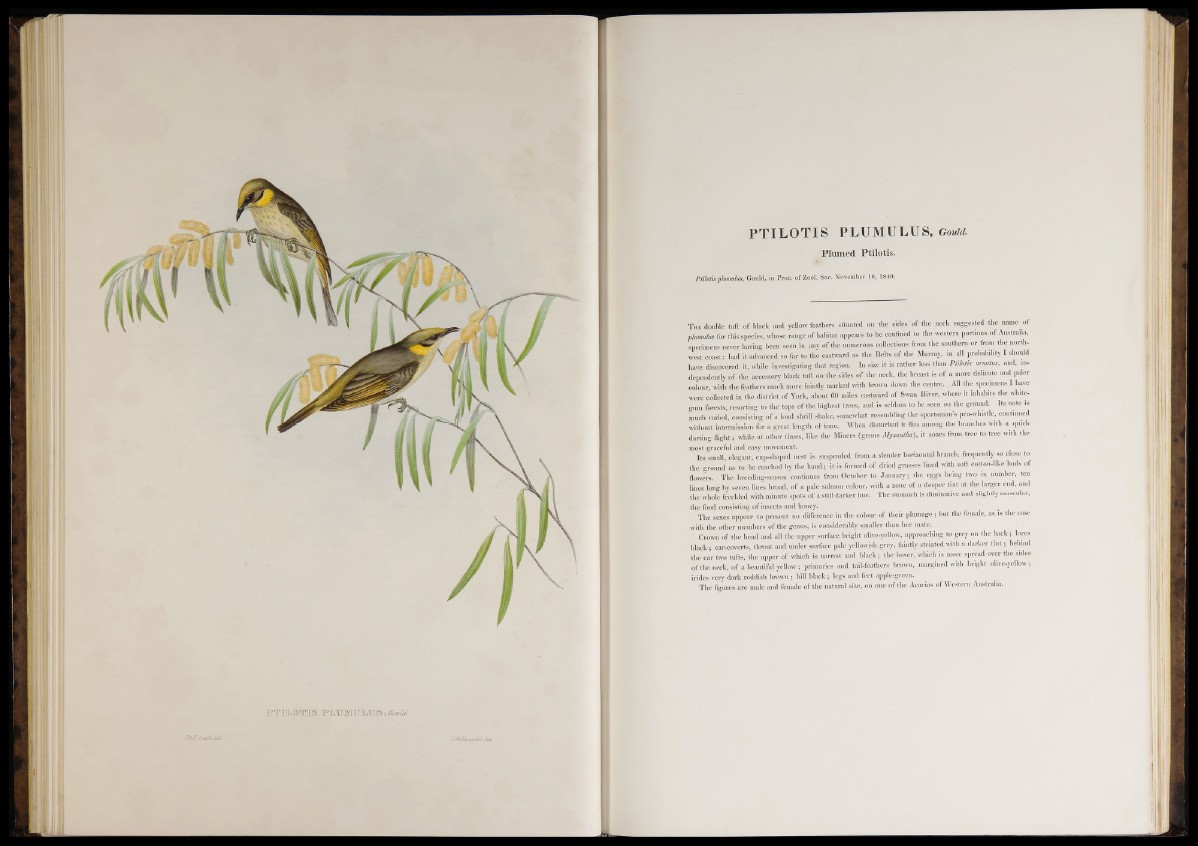
f t a i l ® FJLUMUJlLiIIS: G oiM .
PTILOTIS PLUMULUS, Gould.
Plumed Ptilotis.
Ptilotis phmulus, Gould, in Proc. of Zool. Soc. November 10, 1840.
The double tuft of black and yellow feathers situated on the sides of the neck suggested the name of
phmulus for this species, whose range of habitat appears to be confined to the western portions of Australia,
specimens never having been seen in any o f the numerous collections from the southern or from the northwest
coast: had it advanced so far to the eastward as the Belts of the Murray, in all probability I should
have discovered it, while investigating that region. In size it is rather less than Ptilotis ormtrn, and, independently
of the accessory black tuft on the sides of the neck, the breast is of a more delicate and paler
colour, with the feathers much more faintly marked with brown, down the centre. All the specimens I have
were collected in the district of York, about 60 miles eastward of Swan River, where it inhabits the white-
gum forests, resorting to the tops of the highest trees, and is seldom to be seen on the ground. Its note is
much varied, consisting of a loud shrill shake, somewhat resembling the sportsman’s pea-whiStle, continued
without intermission for a great length o f time. When disturbed it flits among the branches with a quick
darting flight; while at other times, like the Miners (genus Myzuntha) , it soars from tree to tree with the
most graceful and easy movement.
Its small, elegant, cup-shaped nest is suspended from a slender horizontal branch, frequently so close to
the ground as to be reached by the hand; it is formed of dried grasses lined with soft cotton-like buds of
flowers. The breeding-season continues from October to January; the eggs being two in number, ten
lines long by seven lines broad, o f a pale salmon colour, with a zone o f a deeper tint at the larger end, and
the whole freckled with minute spots of a still darker hue. The stomach is diminutive and slightly muscular,
the food consisting o f insects and honey.
The sexes appear to present no difference in the colour of their plumage; but the female, as is the case
with the other members of the genus, is considerably smaller than her mate.
Crown of the head and all the upper surface bright olive-yellow, approaching to grey on the back; lores
black; ear-coverts, throat and under surface pale yellowish grey, faintly striated with a darker tin t; behind
the ear two tufts, the upper of which is narrow and black; the lower, which is more spread over the sides
o f the neck, o f a beautiful yellow; primaries and tail-feathers brown, margined with bright olive-yellow;
irides very dark reddish brown; bill black; legs and feet apple-green.
The figures are male and female of the natural size, on one of the Acacias of Western Australia.